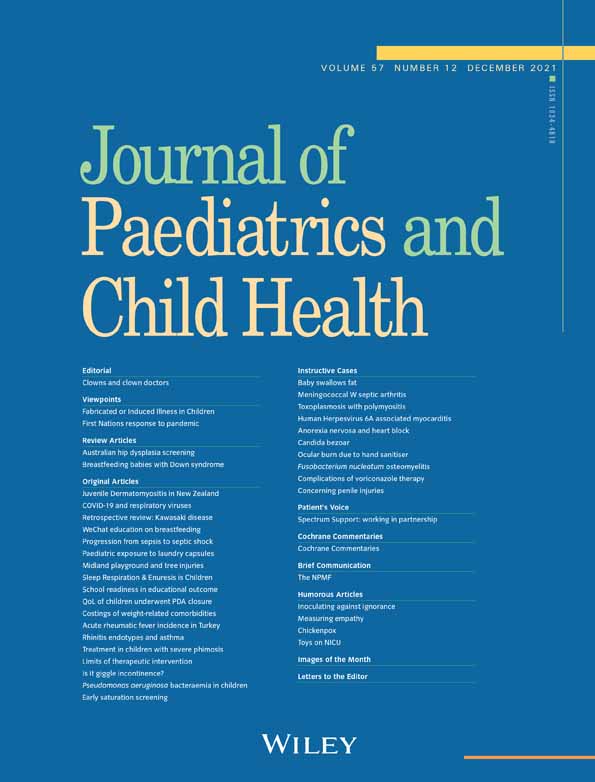Late-Preterm and Term Home O2 Therapy Study
Conflict of interest: None declared.
LATE-PRETERM AND TERM HOME O2 THERAPY STUDY
There is little published relating to home oxygen therapy in the late-preterm or term population. There is ongoing debate amongst neonatologists as to what the lower limit target SpO2 during an oxygen saturation study should be, and limited evidence to inform any recommendations.1 Chronic low saturations are associated with the development of pulmonary hypertension, suboptimal growth and potentially impaired neurodevelopment.2 Currently the majority of neonatal units in Scotland target SpO2 < 94% for <5% of the total duration of the study.
In our Late-Preterm and Term Home O2 Therapy Study, we sought to describe the characteristics of babies born at 30 weeks' gestation and above, who, over a 5-year period, were discharged from our tertiary unit on home oxygen. We also sought to determine which babies, based on their earliest available sleep study, may not have fulfilled criteria for home oxygen if current saturation limits were altered.
Thirty-four babies were included, of which 76% were male. Gestation at birth ranged from 30+0 to 39+4 weeks. Forty-one percent of mothers resided within the top 20% most deprived postcodes in Scotland. The majority (79%) of pregnancies were not affected by premature rupture of membranes. Sixty-five percent of mothers received a complete course of antenatal steroids. Over half of babies were delivered by emergency section. Seventy-one percent of babies were managed with non-invasive support only at delivery. With regards to maximal respiratory support during admission, 32% of babies required conventional ventilation, whilst 29% received non-invasive support. Sixty-two percent had a diagnosis of respiratory distress syndrome, and 35% were diagnosed with late onset sepsis during admission. Three babies in the study had trisomy 21. Length of admission ranged from 26 to 116 days. Two-thirds of babies were discharged in 0.1 or 0.2 L. Fifty percent no longer required oxygen by 20 weeks post-discharge, and 74% by 30 weeks.
If SpO2 < 92% for <5% of the study was acceptable, 50% of the babies would not have qualified for home oxygen based on their earliest available study. If SpO2 < 90% for <5% was acceptable, 71% would not have qualified.
This cohort study suggests that male gender is a risk factor for home oxygen therapy in the late-preterm and term population. Avoidance of intubation and ventilation does not guarantee discharge without home oxygen. Targeting SpO2 < 90% for <5% of total analysis interval could significantly reduce the number of late-preterm and term babies discharged home on oxygen.
Acknowledgement
The authors gratefully acknowledge the support of the community liaison nursing team for enabling them to identify suitable patients for inclusion through review of their records.




